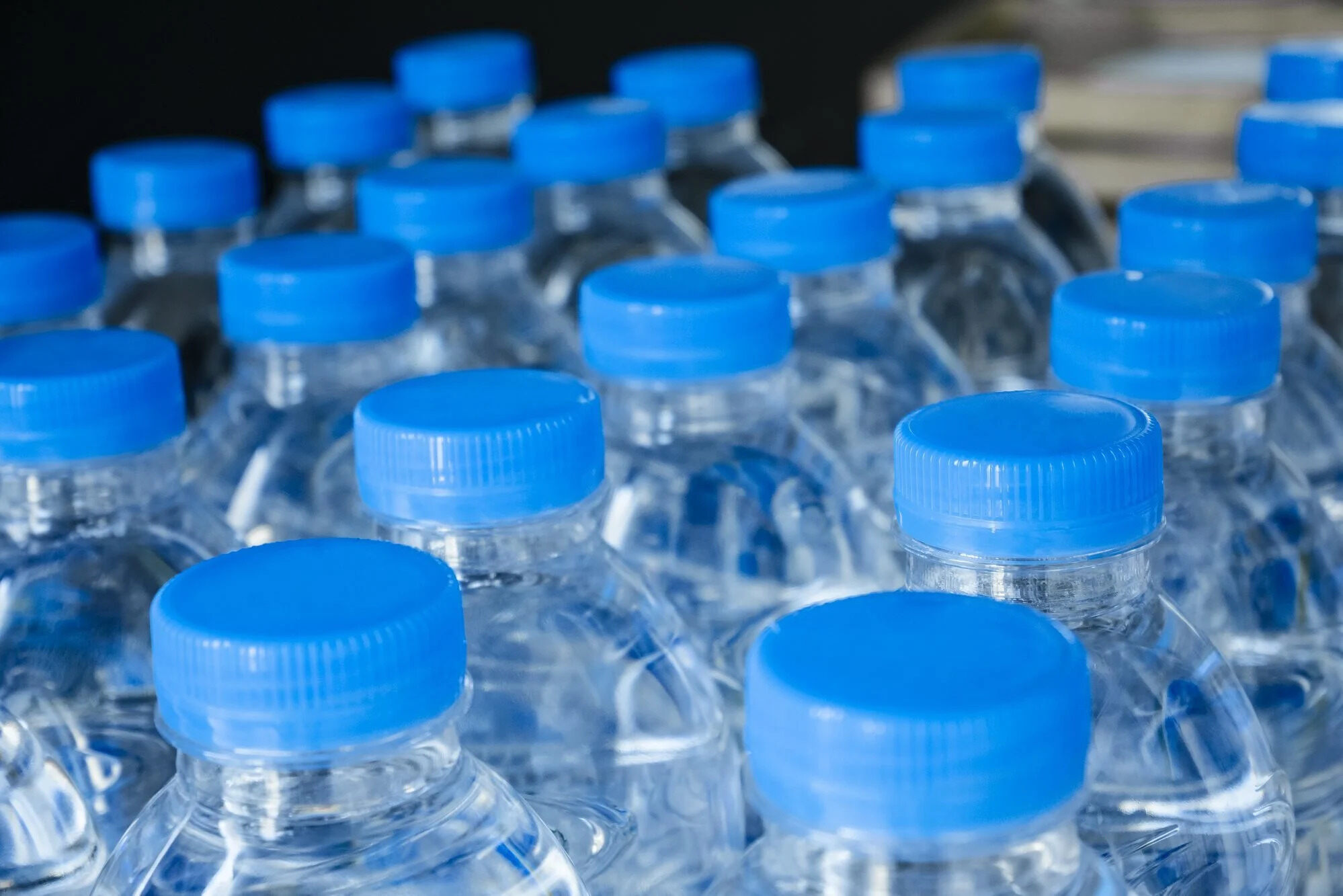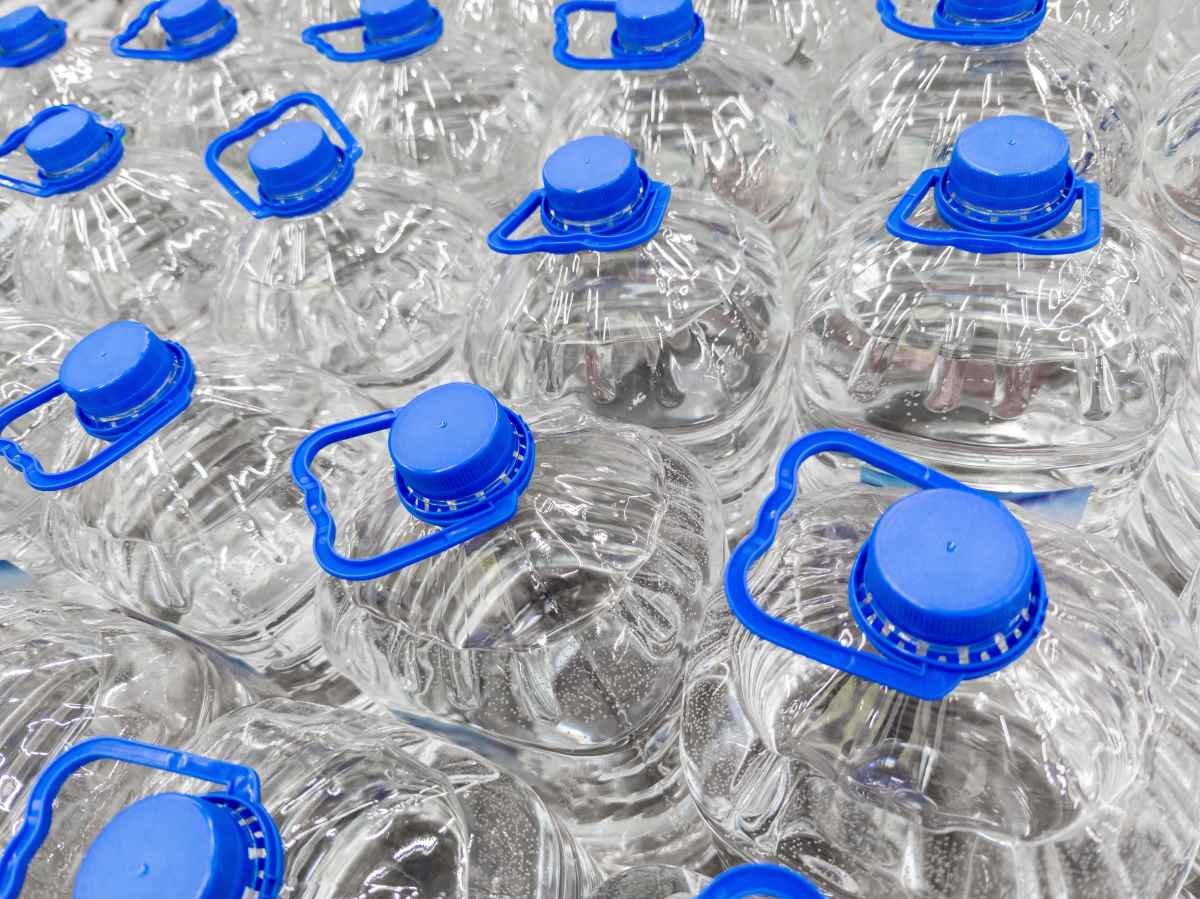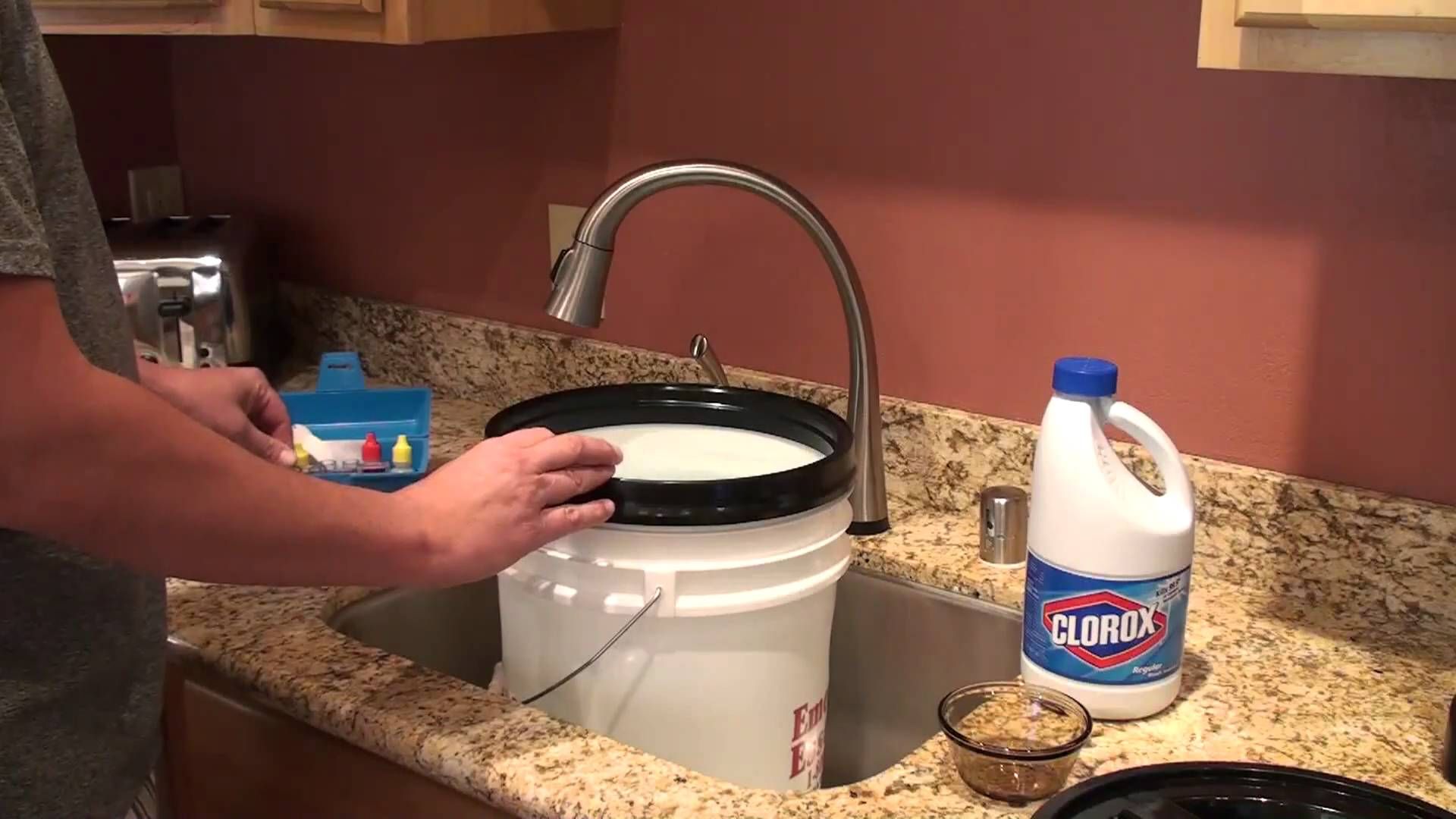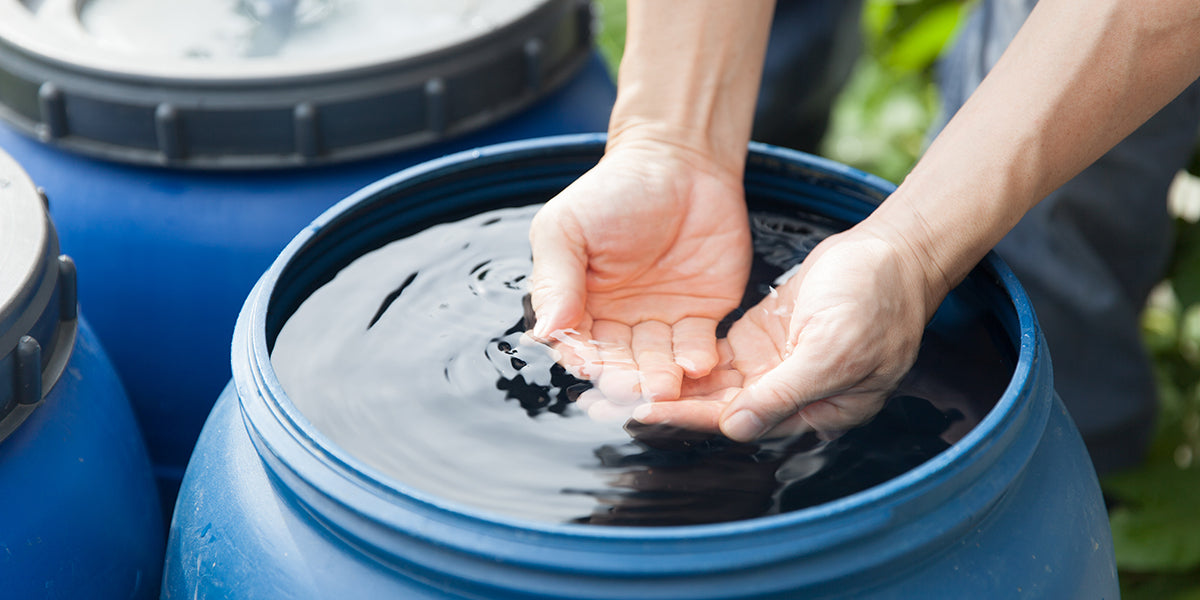

Articles
How To Store Water Long Term
Modified: January 7, 2024
Looking for articles on how to store water long term? Discover expert tips and recommendations for safe and effective long-term water storage.
(Many of the links in this article redirect to a specific reviewed product. Your purchase of these products through affiliate links helps to generate commission for Storables.com, at no extra cost. Learn more)
Introduction
Water is one of the most vital resources for our survival. Without access to clean and safe drinking water, we would be unable to sustain ourselves in times of crisis or emergencies. It is essential to have a reliable and long-term water storage plan in place to ensure our well-being and the well-being of our loved ones.
In this article, we will explore the importance of long-term water storage and the various methods and techniques for storing water effectively. We will discuss different containers suitable for water storage, the importance of choosing the right location for storing water, and the necessity of purifying and treating water for long-term storage. Additionally, we will delve into the importance of rotating and replenishing stored water and provide valuable tips for maintaining water quality. Lastly, we will touch upon emergency water sources and the importance of having a backup plan in case of unforeseen circumstances.
Having a sufficient supply of clean water is crucial for various reasons. Natural disasters, such as earthquakes, hurricanes, and floods, can disrupt water infrastructure and contaminate local water sources, making it unsafe for consumption. In these situations, having a well-maintained and properly stored water supply can save lives.
Moreover, storing water for long-term use is not only beneficial during emergencies but also helpful for everyday life. It provides peace of mind knowing that you have access to clean water, even during water shortages or disruptions in the supply.
Now, let’s explore the different methods and considerations for long-term water storage. By following these guidelines, you can ensure the availability of safe and potable water for yourself and your family, even in the most challenging circumstances.
Key Takeaways:
- Long-term water storage is crucial for emergency preparedness, water shortages, and self-sufficiency. Choosing the right containers, location, and purification methods ensures a reliable and safe water supply during challenging times.
- Regularly rotating, replenishing, and maintaining water quality are essential for preserving the freshness and usability of stored water. Having backup plans and alternative water sources adds an extra layer of security during emergencies.
Read more: How To Store Water For Long Term
Importance of Long-Term Water Storage
Long-term water storage is essential for ensuring that you have an adequate supply of clean drinking water during emergencies and times of crisis. It is crucial to understand the importance of storing water for an extended period and the benefits it provides.
1. Emergency Preparedness: Disasters can strike unexpectedly, leaving us without access to clean water for days or even weeks. Having a well-prepared water storage system in place ensures that you and your family have a reliable source of drinking water during emergencies. It eliminates the stress and panic of searching for water when resources are scarce.
2. Water Shortages: Water scarcity is a global issue that affects both developed and developing countries. Droughts, pollution, and growing populations can strain water supplies, leading to shortages. By storing water for the long-term, you can minimize the impact of water shortages on your daily life.
3. Contaminated Water: During natural disasters or emergencies, the water supply can get contaminated with pollutants, chemicals, or pathogens. Storing water allows you to have a safe and clean source of drinking water, reducing the risk of waterborne illnesses and diseases.
4. Disruption in Water Supply: Infrastructure failures or repairs can cause temporary disruptions in the water supply system. Storing water ensures that you can continue with your daily activities without any interruptions, such as cooking, cleaning, or personal hygiene.
5. Self-Sufficiency: Long-term water storage promotes self-sufficiency by reducing reliance on external sources of water. You have greater control over your water supply and can rely on it during emergencies or whenever the need arises.
6. Peace of Mind: Knowing that you have a sufficient reserve of clean water gives you peace of mind. It allows you to focus on addressing other emergency or survival needs without worrying about finding water.
To ensure the effectiveness of long-term water storage, it is crucial to follow proper storage techniques and maintain the quality of stored water. We will discuss container options, location considerations, water treatment methods, and maintenance tips in the following sections.
By understanding the importance of long-term water storage and taking the necessary steps to implement it into your emergency preparedness plan, you can safeguard the well-being of yourself and your loved ones. Remember, water is a basic necessity, and having a reliable supply is crucial for surviving and thriving during challenging times.
Containers for Storing Water
Choosing the right containers for storing water is a crucial aspect of long-term water storage. The containers you select must be durable, safe, and suitable for storing drinking water. Here are some options to consider:
- Food-Grade Plastic Containers: High-quality food-grade plastic containers, such as BPA-free polyethylene or polypropylene containers, are a popular choice for water storage. These containers are often opaque, which helps prevent the growth of algae and bacteria. Ensure that the containers are specifically labeled as food-grade and have a tight-sealing lid to minimize the risk of contamination.
- Water Storage Barrels: Water storage barrels, typically made of plastic or metal, are larger containers that can hold a significant amount of water. They are specifically designed for long-term water storage and often come with built-in spigots for easy access. When using water barrels, make sure they are made of food-grade materials and specifically designed for storing potable water.
- Glass Containers: Glass containers, such as large glass bottles or jars, can be used for storing smaller amounts of water. Glass is inert and doesn’t leach chemicals into the water. However, glass containers may not be practical for storing large quantities of water due to their weight, fragility, and limited availability in larger sizes.
- Collapsible Water Containers: Collapsible water containers are lightweight and easy to store when not in use. They are often made of flexible materials, such as polyethylene, and can be folded or rolled up for compact storage. These containers are ideal for mobile or temporary water storage needs.
When selecting containers for storing water, consider factors such as durability, portability, ease of use, and the amount of water you need to store. It is essential to ensure that the chosen containers have airtight lids or closures to prevent contamination and that they are properly cleaned and sanitized before use.
It is also crucial to regularly inspect your water storage containers for any signs of damage or deterioration. Replace any containers that show signs of wear and tear to ensure the integrity of your stored water.
Remember to label your water storage containers with the date of storage and regularly rotate your water supply to maintain freshness. Having a sufficient quantity of water stored in suitable containers is a crucial step in your long-term water storage plan.
Choosing the Right Location for Water Storage
When it comes to storing water for the long term, selecting the right location is just as important as choosing the appropriate containers. The location should be safe, easily accessible, and conducive to preserving the quality of your stored water. Here are some considerations for choosing the right location:
- Cool and Dark Space: Opt for a cool and dark storage area to minimize the growth of bacteria and algae. Direct sunlight and heat can degrade the quality of water over time. Look for a space in your home or property that is shaded or install a cover to protect your water storage area from sunlight.
- Well-Ventilated Area: Adequate ventilation is important to prevent the buildup of unpleasant odors and maintain good air circulation around your stored water. Avoid storing water in airtight or confined spaces, as this can lead to the growth of mold and mildew.
- Stable Temperature: Aim for a location with a stable temperature, as frequent temperature fluctuations can negatively impact the integrity of your stored water. Extreme temperatures can cause the breakdown of plastic containers or promote bacterial growth. Basements or underground storage areas can provide more stable temperatures.
- Away from Chemicals: Keep your water storage area away from chemicals or potential sources of contamination. Avoid storing water near cleaning agents, fuel, or pesticides to prevent accidental spills or contamination.
- Elevated Storage: If possible, elevate your water storage containers to prevent them from coming into contact with the ground. This can help minimize the risk of groundwater contamination and pests accessing your water supply.
- Secure and Accessible: Ensure that your water storage area is secure from unauthorized access and protected from potential damage. Keep it easily accessible so you can rotate or replenish your water supply when needed.
It’s also worth considering the weight of your stored water, especially if you opt for larger containers or water storage barrels. Make sure the location can handle the weight to prevent any structural damage or instability.
Regularly monitor the condition of your water storage area to ensure there are no leaks, mold growth, or other signs of damage. Perform routine inspections and maintenance checks to guarantee the longevity and quality of your stored water.
By choosing the right location for water storage, you can help preserve the quality of your stored water for an extended period. Remember to consider factors such as temperature, ventilation, security, and potential sources of contamination when selecting the best spot for your water storage needs.
Purifying and Treating Water for Long-Term Storage
Purifying and treating water before storing it for the long term is essential to ensure its safety and maintain its quality over time. Even if water appears clean, it may still contain contaminants that can affect its taste and pose health risks. Here are some methods for purifying and treating water for long-term storage:
- Filtration: Filtration is an effective method to remove larger particles, sediments, and debris from water. Use a quality water filter or filtration system that can effectively remove impurities. Look for filters that are specifically designed for water storage purposes and consider the size of the particles they can remove.
- Chlorination: Chlorine is a common disinfectant used to kill microorganisms and bacteria in water. Adding a small amount of chlorine bleach to your water storage containers can help keep the water disinfected. Consult the manufacturer’s recommendations for the appropriate amount of chlorine bleach to use based on the volume of water you are treating.
- Boiling: Boiling water is one of the oldest and most reliable methods for purifying water. Bring the water to a rolling boil for at least one minute to kill any harmful bacteria, viruses, or parasites. Allow the water to cool before storing it in your chosen containers.
- UV Sterilization: UV sterilization is an effective method for killing microorganisms in water. UV sterilizers use ultraviolet light to destroy the DNA of bacteria, viruses, and other harmful pathogens. Follow the manufacturer’s instructions for the appropriate duration of UV exposure to effectively treat the water.
- Chemical Tablets: Water purification tablets or drops containing chemicals such as iodine or chlorine dioxide can be used to treat water for storage. These tablets are compact, easy to use, and portable, making them a viable option for emergency situations or when you are on the go. Follow the instructions on the packaging for the correct dosage and treatment time.
It is important to note that any method used for purifying and treating water should be done prior to storing it, as it may not be possible to effectively treat water once it has been stored for the long term.
Regularly monitor and test the quality of your stored water to ensure it remains safe for consumption. If you notice any changes in taste, odor, or appearance, it may indicate a need to re-treat or replace the stored water.
By purifying and treating water before storing it, you can minimize the risk of contaminants and ensure the long-term safety and suitability of your water supply. Remember to follow the recommended guidelines and methods for water purification to maintain the quality of your stored water over time.
Store water in clean, airtight containers made of food-grade plastic or glass. Add a few drops of unscented bleach per gallon to prevent bacterial growth. Rotate water every 6 months for freshness.
Read more: How To Store Water Long Term Safely
Rotating and Replenishing Stored Water
Regularly rotating and replenishing your stored water is a crucial aspect of maintaining its freshness and quality over time. Water that sits for extended periods can become stagnant, and the taste and quality may deteriorate. Here are some guidelines for effective rotation and replenishment of stored water:
- First In, First Out (FIFO) System: Implement a FIFO system when using your stored water. This means using the oldest water first and replenishing it with fresh water to ensure that your supply is always up to date.
- Schedule Regular Water Rotation: Set a schedule to rotate and replenish your stored water supply. As a general guideline, aim to rotate your water supply every six months. However, certain factors like warmer temperatures, storage container material, and water treatment methods may require more frequent rotation.
- Inspect and Treat Water Before Rotation: Before rotating your stored water, inspect it for any signs of contamination, such as foul odor, discoloration, or debris. If you notice any issues, discard that water and disinfect the container before refilling it with fresh water.
- Use Rotated Water for Household Needs: Instead of wasting the water you are rotating, consider using it for non-drinking purposes like flushing toilets, watering plants, or cleaning. This way, you can still make use of the water without compromising its quality.
- Record Keeping: Keep a record of when you store water and when it needs to be rotated. This will ensure that you stay organized and can easily track the age of your stored water supply.
When replenishing your stored water, remember to follow the same purification and treatment methods discussed earlier. This will help ensure the freshness and safety of the newly added water.
In addition to regular rotation, it’s important to regularly inspect your water storage containers for any signs of damage or deterioration. If you find any cracks, leaks, or other issues, replace the container immediately to prevent contamination or the risk of a potential failure.
By adopting a regular rotation and replenishment routine, you can maintain a fresh and reliable supply of stored water. This will provide you with peace of mind, knowing that you have access to clean water in times of need.
Tips for Maintaining Water Quality
Ensuring the quality of your stored water is essential for its long-term usability and your overall safety. Here are some tips to help you maintain the quality of your stored water:
- Keep Containers Clean: Regularly clean and sanitize your water storage containers before filling them with fresh water. Use mild soap and water to clean the containers, and rinse them thoroughly to remove any residue. Avoid using harsh chemicals that could contaminate the water.
- Store in a Clean Environment: Choose a clean and sanitary area for storing your water containers. Keep the surrounding area free from dirt, pests, and chemicals that could potentially contaminate the stored water.
- Protect from Extreme Temperatures: Avoid storing water in areas that are prone to extreme temperature fluctuations. High temperatures can accelerate the growth of bacteria and algae, while freezing temperatures can lead to container damage. Aim to store your water in a cool, stable environment.
- Check for Leaks: Regularly inspect your water storage containers for any signs of leaks or damage. Even a small crack or leak can compromise the quality and safety of your stored water. Patch any leaks immediately or replace the container if necessary.
- Use a Water Preservative: Consider using a water preservative or stabilizer designed for long-term water storage. These additives can help extend the shelf life of your stored water and maintain its quality over time. Follow the manufacturer’s instructions for the proper dosage and application.
- Test Water Quality: Periodically test the quality of your stored water using a water testing kit. This will help you detect any potential contaminants or issues with your water supply. If you notice any abnormalities, take the necessary steps to address the problem or replace the stored water.
- Monitor Expiration Dates: If you have commercially bottled water in your storage, regularly check the expiration dates and rotate them accordingly. While water does not technically expire, it is a good practice to consume or replace bottled water before the expiry date for optimal freshness.
- Consider Secondary Filtration: To further enhance the quality of your stored water, consider using a secondary water filtration system. This can help remove additional impurities or improve taste. Choose a filtration system suitable for long-term water storage and follow the manufacturer’s instructions.
Remember to keep a record of any maintenance or testing done on your water storage system. This will help you track and ensure the ongoing quality of your stored water.
By following these tips and guidelines, you can maintain the quality and safety of your stored water for an extended period. Regular maintenance, cleanliness, and monitoring are key to ensuring that your stored water remains safe and usable in times of need.
Emergency Water Sources and Backup Plans
While storing water for emergencies is crucial, it’s also important to have contingency plans and alternative water sources in case your stored water supply runs out or becomes compromised. Here are some emergency water sources and backup plans to consider:
- Water Filtration and Purification: If you have access to a natural water source, such as a river or lake, having a reliable water filtration or purification system is essential. Portable water filters, purifiers, or water treatment tablets can help remove contaminants and make the water safe for drinking.
- Rainwater Harvesting: Collecting rainwater can be an effective way to supplement your water supply during emergencies. Set up rainwater collection systems like rain barrels or diverters to capture rainwater from rooftops. Ensure that the collected rainwater is properly filtered and treated before consumption.
- Community Water Sources: In some emergency situations, community water sources such as designated water distribution centers or emergency response stations may be established. Stay informed about local emergency plans and know the location of these community water sources in your area.
- Water from Hot Water Tanks and Pipes: In certain situations, you can access the water from your hot water tank or the pipes in your home. Before using this water, ensure that it is not contaminated and treat it if necessary.
- Well Water: If you have a well on your property, ensure that it is properly maintained and regularly tested for water quality. In cases where the power supply is disrupted, consider having a backup power source like a generator to pump water from the well.
- Water Delivery Services: Explore the availability of water delivery services in your area. These services can provide emergency water supplies for a fee and can be a reliable backup plan to ensure you have access to clean water during a crisis.
It is crucial to have the necessary tools and equipment for collecting, filtering, and treating water from alternative sources. Portable water filtration systems, water purifiers, and water treatment tablets should be part of your emergency preparedness kit.
Additionally, it is essential to educate yourself and your family on water conservation techniques during emergencies. Practicing water-saving habits can help stretch your available water supply, ensuring that you have enough water for essential needs.
Remember to regularly monitor and maintain your emergency water sources and filtration systems. Inspect and clean any equipment as necessary to ensure optimal functionality when needed.
Having backup plans and alternative water sources will ensure that you can access safe drinking water during emergencies when your stored water supply may not be sufficient or accessible. It’s always better to be prepared for unforeseen circumstances and have multiple options to rely on during challenging times.
Conclusion
In times of crisis or emergencies, having a reliable and long-term water storage plan is crucial for ensuring the well-being and survival of yourself and your loved ones. By understanding the importance of long-term water storage and implementing the right strategies, you can be prepared for water shortages, disruptions in the water supply, or contamina-tion of local water sources.
Choosing the right containers for storing water, such as food-grade plastic containers or water storage barrels, is essential. Selecting the proper location for water storage, such as a cool and dark space, ensures the optimal preservation of water quality. Purifying and treating water before storage, through methods like filtration, chlorine disinfection, boiling, or UV sterilization, helps eliminate contaminants and maintain water safety.
Regularly rotating and replenishing stored water helps ensure freshness and usability. Following best practices, such as using a first-in, first-out system and scheduling regular rotation, will keep your water supply up to date and ready for use.
Maintaining water quality is vital for long-term storage. Keeping containers clean, storing water in a clean environment, and checking for leaks are important habits to cultivate. Monitoring water quality through testing and using water preservatives or stabilizers can help preserve water integrity.
Having backup plans and alternative water sources, such as water filtration systems, rainwater harvesting, or community water sources, provides additional security. Being aware of emergency water delivery services and practicing water conservation techniques are also valuable during emergencies.
In conclusion, by implementing these strategies and being proactive in your approach to long-term water storage, you can ensure a reliable and safe water supply during times of need. Stay prepared, stay informed, and remember that water is a vital resource that requires careful planning and management for the well-being of yourself and your community.
Frequently Asked Questions about How To Store Water Long Term
Was this page helpful?
At Storables.com, we guarantee accurate and reliable information. Our content, validated by Expert Board Contributors, is crafted following stringent Editorial Policies. We're committed to providing you with well-researched, expert-backed insights for all your informational needs.















0 thoughts on “How To Store Water Long Term”